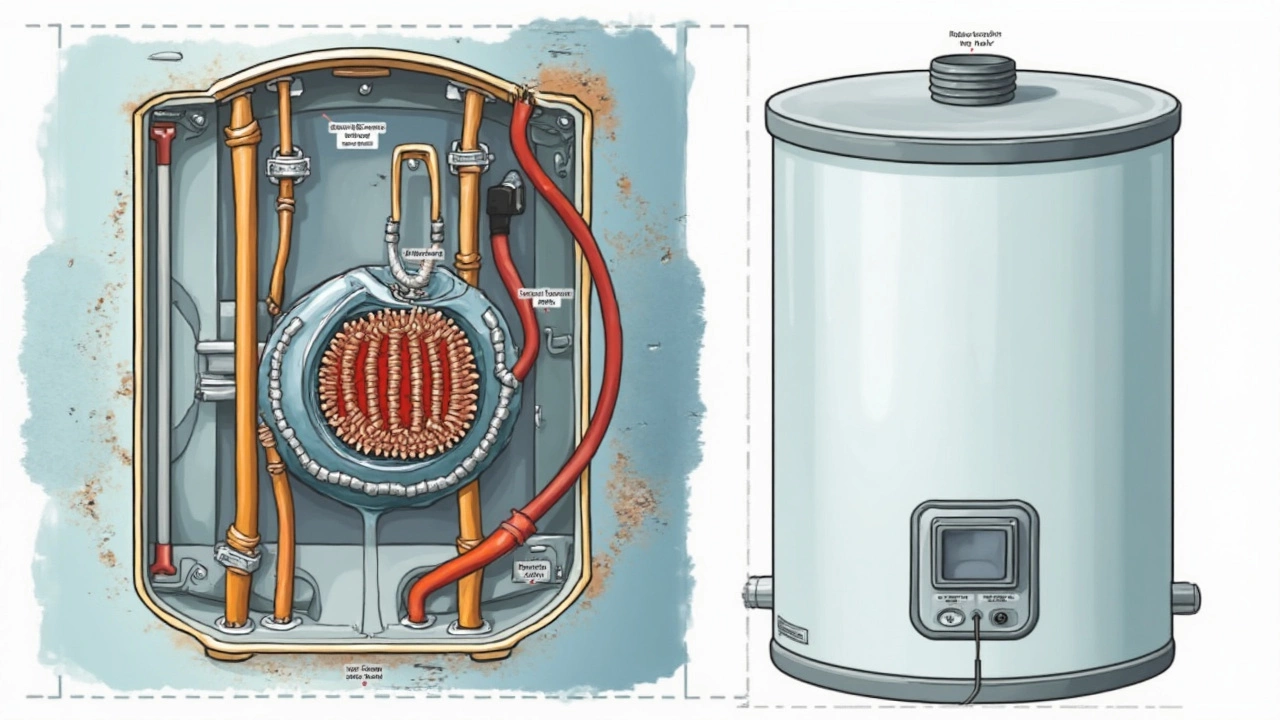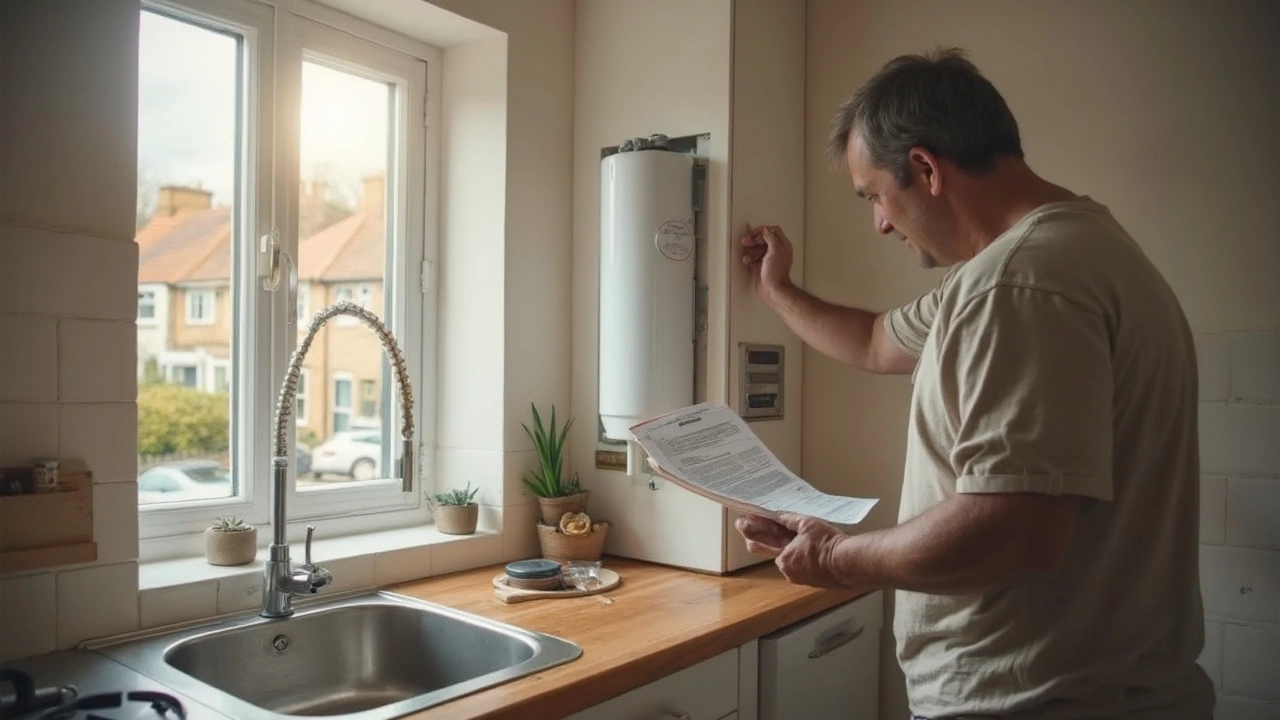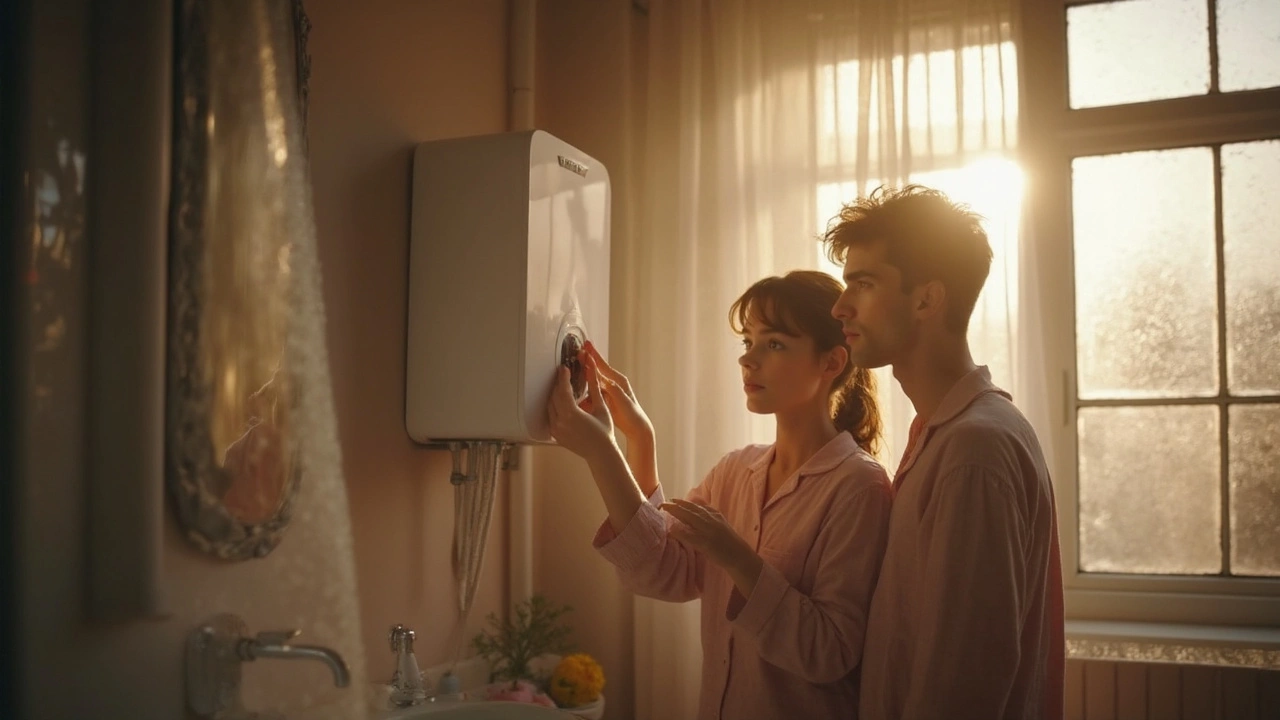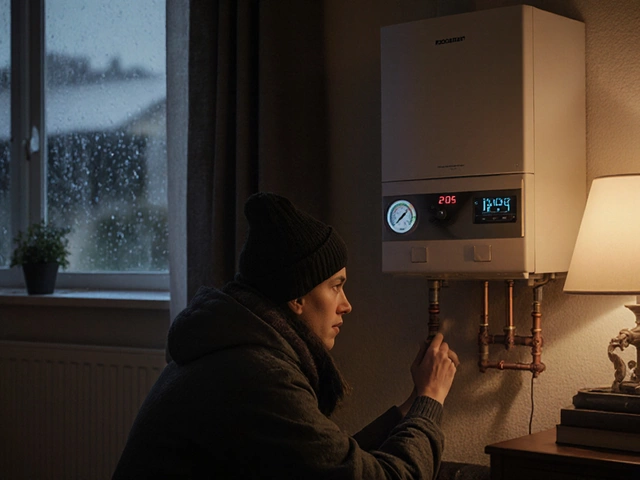Ever stepped into the shower, expecting that glorious hot water, and all you got was lukewarm disappointment? That’s classic when a heater element goes bad. But before you start dismantling things, let’s zero in on what a bad element actually looks like in real life.
The most obvious sign is a drop in water temperature. If you’re suddenly running out of hot water much faster than before, or if it’s just not getting as hot, there’s a good chance the element is on its last legs. Sometimes, the water might swing from hot one minute, to cold the next. That doesn’t just mess with your mornings—it’s also a red flag something inside the tank is wrong.
Don’t ignore weird noises, either. If your heater starts making popping or hissing sounds, that’s usually mineral buildup cooking off your element, slowly frying it. And if you notice the circuit breaker for your water heater keeps tripping, it might be the element shorting out. None of these signs are good.
Knowing these signals helps you avoid major headaches and possibly a flood. Fixing a heater isn’t rocket science, but you need the right info, or it’ll cost you in the long run—especially if you have to shower in ice-cold water while you figure it out.
- Common Signs of a Failing Heater Element
- Why Heater Elements Go Bad
- Simple Ways to Test Your Heater Element
- Should You Repair or Replace?
Common Signs of a Failing Heater Element
If your water heater's acting up, it almost always shows you a few warning signals first. Recognizing these can save you money and keep you from freezing through your next shower. So, how do you tell if you're dealing with a bad hot water heater element instead of just a minor hiccup?
- No Hot Water: If you crank your tap all the way but only cold water comes out, often that's because both elements in an electric heater have failed or the single one is shorted out.
- Warm, Not Hot, Water: Getting lukewarm water usually means just one of the two elements (top or bottom) is busted. The heater still works—just barely.
- Hot Water Runs Out Fast: If your hot water vanishes after a couple minutes, the bottom element is probably shot, so your tank just can't keep up with the demand.
- Water is Scalding, Then Cold: Sometimes, you’ll notice a quick burst of super-hot water, then nothing but cold. That back-and-forth is another hint something’s up inside.
- Weird Noises from Tank: Electric heaters shouldn’t rumble or hiss. Popping or snapping usually means mineral scale is breaking apart off the faulty element inside.
- Frequent Breaker Trips: If your heater’s circuit breaker keeps tripping, a failing element could be drawing too much power or shorting out, which is dangerous and can fry the wiring.
Ever wondered how common these issues really are? Here’s a quick look at what folks typically report when calling in for repairs:
| Symptom | % of Reported Cases |
|---|---|
| No hot water | 37% |
| Lukewarm water only | 28% |
| Runs out quickly | 18% |
| Noise from tank | 10% |
| Breaker trips | 7% |
If you’ve got any of these signs, odds are it’s not your imagination—your element’s probably on its way out. Next up, let's get into why these elements fail in the first place.
Why Heater Elements Go Bad
Even the best hot water heater element won’t last forever. The main enemy here is mineral buildup. If you live where the water’s hard, every time you heat water, minerals like calcium start caking onto the element. Over time, this acts like an insulator, making the element work way harder (and hotter) than it should—until it gives up.
Power surges are another common villain. Any spike in your electrical supply can burn out the element in a second, and you won’t see it coming. It’s not just lightning storms—even old wiring or sudden spikes from appliances can mess things up.
Let’s not forget about age. Most water heater elements last about 6-10 years. If your heater is pushing past that, it’s running on borrowed time, especially if you’ve never changed the element. A worn-out thermostat can also leave the element running longer than needed, basically cooking it to death.
Wondering if it’s your fault? Sometimes, yes. If you regularly crank your thermostat too high, you’re putting extra stress on the hot water heater element. The hotter you go, the faster that thing will burn out.
- Hard water speeds up mineral buildup
- Old wiring or power surges can fry elements in seconds
- High thermostat settings mean more wear on the element
- Age catches up around year 6-10
Knowing these causes gives you a fighting chance to stretch the life of your heater and avoid those ice-cold showers. Regular flushes can beat back minerals, and keeping the thermostat set to around 120°F helps too. If your area’s famous for hard water, you might want to install a water softener to cut down on trouble for good.

Simple Ways to Test Your Heater Element
Don’t worry—testing your hot water heater element doesn’t require a degree in electrical engineering or a shelf full of tools. With a multimeter and a bit of patience, most people can check what’s going on with their water heater element themselves.
First things first: safety matters. Always switch off the power to your hot water heater at the breaker box before pulling off any covers. Electric shock is no joke, so double-check the power’s off with a voltage tester if you have one.
- Find your heater’s access panel—usually, it’s on the side. Remove the screws, and gently pull away the insulation to expose the element’s electrical terminals.
- Set your multimeter to the Ohms (Ω) setting. Touch one probe to each screw on the heater element (the terminals that have electrical wires attached). For most residential heaters, a healthy element usually reads between 10 and 30 ohms. If your display shows nothing or infinity, the element is toast.
- To check for a short, keep one probe on a terminal and touch the other to the metal part of the element. Any reading other than zero means your element is shorted out, and you’ll need a new one.
If you prefer numbers, here’s a handy table you can use:
| Ohms Reading | Status |
|---|---|
| 10 – 30 | Element is good |
| 0 or INF/OL | Element is bad |
One pro tip: If your heater has two elements (most do), test both. Sometimes only one fails, so you might still get lukewarm water, which can be confusing.
“Testing water heater elements with a multimeter is recommended as a first diagnostic step. It’s quick, safe, and can pinpoint the problem before you spend money on replacement parts.” — Home Repair Institute
If your hot water heater element checks out, but you’re still getting lousy hot water, the thermostat might be the real villain. Otherwise, if the readings are off, replacing the element isn’t that tough—just be sure the tank is fully drained.
Should You Repair or Replace?
When you’re staring at a water heater that refuses to do its job, the big question is whether you can fix the problem or if it’s time to throw in the towel and get a new one. Here’s the good news: if the only issue is a bad heating element, most of the time it’s totally worth repairing. Elements are cheap—think $15 to $30 at your average hardware store. Swapping one out is usually a pretty straightforward DIY, especially on standard electric tank heaters. Most folks with basic tools can pull it off in under an hour.
But there are a few situations where it makes more sense to replace the whole unit rather than pour more money into repairs. Ask yourself:
- Is your water heater older than 8-10 years? Most tanks only last about that long before leaks, rust, and worn-out parts mean bigger headaches are around the corner.
- Have you had multiple repairs in the last year? If you’re on a first-name basis with the plumber, that’s a sign.
- Is the tank leaking or super rusty? A bad element is one thing, but if water is pooling around the base or the tank looks like it’s survived a few too many winters, it’s probably time for a new one.
- Are you seeing really high power bills? An old or badly corroded element can make your hot water heater element work extra hard, wasting energy and draining your wallet.
For a newer unit with just a single dead element, replacing that part can give your heater a whole new life. But when you stack up age, rust, and repeat problems, investing in a new heater isn’t just smarter—it will save you money and frustration down the road.
If you decide to repair, always flip off the power at the breaker and check with a voltage tester. For full-on replacement, talk with a pro about more efficient models. If you’ve got hard water in your area, ask them about ways to cut down on future mineral build-up, too. That tip alone can add years to your next heater.





